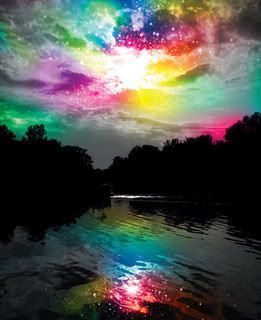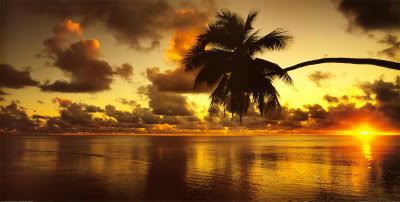Odissi is one of the eight classical dance forms of India. It originates from the state of Orissa, in eastern India.
The classic treatise of Indian dance, Natya Shastra, refers to it as Odra-Magadhi. First century BCE bas-reliefs in the hills of Udaygiri (near Bhubaneshwar) testify to its antiquity. It was suppressed under the British raj but has been reconstructed since India gained independence.
It is particularly distinguished from other classical Indian dance forms by the importance it places upon the tribhangi (literally: three parts break), the independent movement of head, chest and pelvis, and upon the basic square stance known as chauka.
The Odissi tradition existed in three schools; Mahari, Nartaki, and Gotipua. Maharis were Orissan devadasis or temple girls (their name deriving from Maha (great) and ‘Nari’ or ‘Mahri’ (chosen)} particularly those at the temple of Jagganath at Puri. Early Maharis performed mainly nritta (pure dance) and abhinaya (interpretation of poetry) based on mantras & slokas, later Maharis, especially, performed dance sequences based on the lyrics of Jayadev's Gita Govinda. Bhitari gauni Maharis, were allowed in the inner temple while bahari gauni Maharis, though in the temples, were excluded from the sanctum sanctorum.By the sixth century the Gotipua tradition was emerging. One of the reasons given for the emergence of Gotipuas is that Vaishnavas did not approve of dancing by women. Gotipuas were young boys dressed as girls and taught the dance by the Maharis. During this period, Vaishnava poets composed innumerable lyrics in Oriya dedicated to Radha and Krishna. Gotipuas danced to these compositions. The Gotipuas stepped out of the precincts of the temples.
Nartaki dance took place in the royal courts, where it was much cultivated before the British period. At that time the misuse of devadasis came under strong attack, so that Odissi dance withered in the temples and became unfashionable at court. Only the remnants of the gotipua school remained, and the reconstruction of the style required an archaeological and anthropological effort that has tended to foster a conservative purism.Traditional Odissi repertoire consists of:
Mangalacharan: An invocational piece. After paying homage to Lord Jagganath a sloka (hymn) in praise of some God or Goddess is sung, the meaning of which is brought out through dance. Mangalacharan also includes the ‘bhumi pranam’, begging forgiveness of mother earth for stamping on her, and the ‘trikhandi pranam’ or threefold salutation - above the head to the Gods, in front of the face to the gurus and in front of the chest to the audience.
Battu Nrutya: A dance piece offered to the Lord of dance - Lord Shiva in his ‘Batuka Bhairava’ form. This piece brings out the essence of Odissi.
Pallavi: A pure dance item in which a raga is elaborated through eye movements, body postures & intricate footwork.
Abhinaya: A poem telling a story conveyed to the audience through mudra or hand gestures (the language of Indian classical dance), facial expression and body movement.
Dashavataar: A dance piece describing the ten incarnations of the Lord Vishnu with verses taken from the Gita Govinda.
Moksha: A pure dance item with only the mardal-pakhawaj (percussion) accompaniment - the dance of liberation.
Padma Vibushan Kelucharan Mohapatra, Guru Pankaj Charan Das and Guru Deba Prasad Das were the three major gurus who revived Odissi in the late forties and early fifties. Sanjukta Panigrahi, the great exponent of Odissi, was a leading disciple of Guru Kelucharan Mohapatra's and pursued his efforts to revive the art form. In the mid-sixties two other disciples of Kelucharan Mohapatra, Kumkum Mohanty and Sonal Mansingh, were best known for their performances both in India and abroad.
Today gurus of dance have created a new generation of highly talented dancers. Most of the present day gurus were Gotipua dancers themselves and have passed on the dance form to dancers and teachers all over India and abroad. In the early fifties the outside world began to take note of Odissi. Priyambada Mohanty and Dr. Susama Tej represented Orissa in the classical dance category at an Inter University Youth Festival in 1954 and 1955. It was here that Dr Charles Fabri witnessed their performances and hailed Odissi as a great classical dance form and helped Indrani Rehman and Sonal Mansingh study it. Kelucharan Mohapatra, Pankaj Charan Das, Deba Prasad Das, Mayadhar Raut, Sanjukta Panigrahi, Surendranath Jena, Kumkum Mohanty, [[Sonal Mansingh], Madhavi Mudgal, Oopali Operajita and Protima Gauri, all contributed notably to the propagation of Odissi.
The current crop of dancers includes Gangadhar Pradhan, Durga Charan Ranbir, Madhavi Mudgal, Sonal Mansingh, Ramli Ibrahim, Kiran Segal, Oopali Operajita, Aruna Mohanty, Sujata Mohapatra, Daksha Mashruwala, Aloka Kanungo, Surupa Sen, Bijayini Satpathy, Jyoti Rout, Manoranjan Pradhan, Sreyashi Dey, Leena Mohanty, Madhumita Patnaik, Nandita Behera, Jhelum Paranjape, Ratna Roy, Ileana Citaristi, Joyoti Das, Guru Mohan Bode, Sheetal Metkar (Watane), January Low and many others.
The Chauka step
My Dance Guru
(Aparna Fating)
My Guruji
(Shri Guru Giridhari Nayak)
0 Responses
Post a Comment
Subscribe to:
Post Comments (Atom)






















